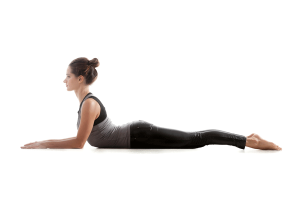Disc problems in the low back or neck
This is a very common complaint, and a mechanical one. To understand the pain associated with a disc injury, it’s important to see how it occurs.

In between each spinal bone is an oval shaped disc, like a spacer. The disc is made up of hard outer rings on the outside and a jelly like substance in the centre. During a disc injury, part of the hard outer ring tears and some of the inside jelly moves away from the centre towards the outside. It depends on how bad an injury it is as to how far the jelly moves and in what direction. For example, if the jelly moves backwards the pain can be felt in the low back, but if it moves backwards and to the side, the jelly can press on a nerve going to the arm or leg and then the pain can be felt in the arm or leg.
If the injury is severe, pins and needles or numbness can be felt, and sometimes weakness can occur in the leg or arm. Be sure to make contact with your Chartered Physiotherapist or Doctor should you feel these symptoms.
Physiotherapy can help the disc recover by working out which way the jelly has moved, and designing treatment and exercises to relieve the pressure from the jelly. In turn this helps the jelly to be reabsorbed back into place. Part of the treatment is to explain what’s happening along the way and help to prevent it occurring again.
Physiotherapy exercises such as The McKenzie Program are specifically designed for disc injuries, and treatments such as traction and mobilisations help to relieve the pressure of the jelly.

Share with friends
Follow New Developments
